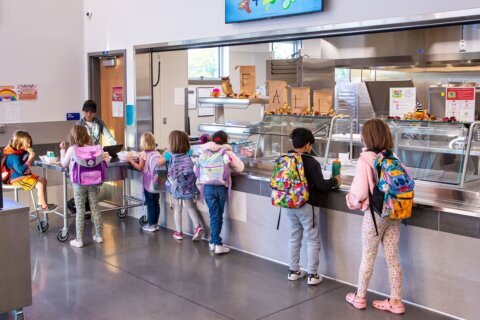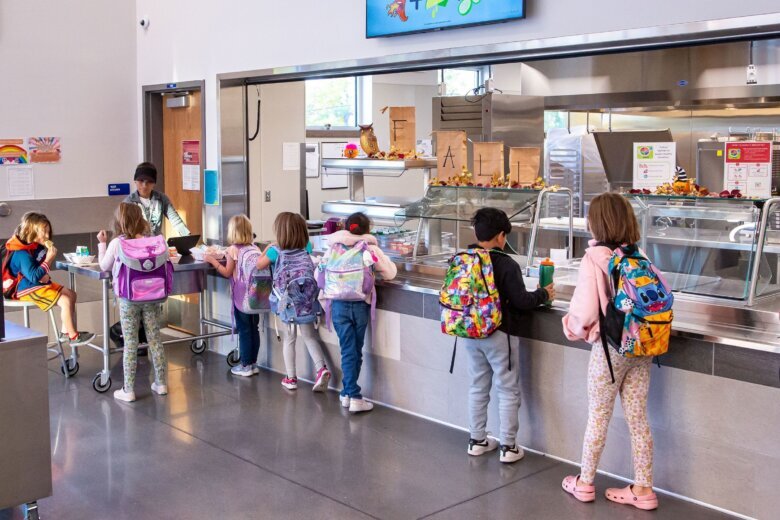
(CNN) — As soon as Tracy Area Schools in Minnesota resumed charging for breakfast and lunch last year, students started dropping out of the program. Many of their families simply couldn’t shell out up to $2.65 for a meal each day.
“We have some kids who didn’t eat because Mom and Dad can’t afford it,” said Michele Hawkinson, food service director for the rural district of 700 students. “These kids are hungry. This is maybe the only nutritious, healthy meal they’re getting a day.”
But Hawkinson no longer needs to worry about children in her district skipping meals. Starting this year, Minnesota students at schools that participate in the federal school meals program can eat breakfast and lunch for free, thanks to a law that state legislators passed in March. The initiative will cost about $200 million a year.
Minnesota is one of nine states that are picking up the tab for students’ breakfast and lunch in many of their schools. California, Colorado, Maine, Massachusetts, Michigan, New Mexico and Vermont have also approved permanent universal free meals programs, while Nevada launched a two-year effort last year.
Other states have extended free meals to more students. For instance, Connecticut and Pennsylvania are providing free breakfasts this school year. And lawmakers in other states have introduced legislation to establish universal free meal programs.
“There’s been a tremendous momentum for states to move forward on offering free school meals for all,” said Crystal FitzSimons, director of school programs at the Food Research & Action Center. “Offering free meals to all students just changes the culture of the cafeteria. (It) increases participation and makes the cafeteria a really positive environment for all students.”
States are paying for the initiatives in different ways. Massachusetts is using revenue from its new millionaires’ tax to help cover the cost of the $172 million program, while Colorado is raising around $100 million a year by limiting state tax deductions for affluent residents. Other states are drawing from their general budgets.
Federal funding for free meals expired
The states’ actions build upon a federal Covid-19 pandemic relief program that provided free meals to all students, regardless of income, for more than two years.
During that time, around 30 million students were receiving free meals at school, according to the US Department of Agriculture, up from about 20 million children who qualified based on their household income prior to the pandemic.
Allowing all students to eat in the cafeteria at no charge minimized the stigma felt by some kids who received free meals, increasing the likelihood that they would actually partake in breakfast and lunch, school nutrition officials said.
But the pandemic program expired at the start of the last academic year. Lower-income families once again had to fill out applications for free or reduced-price meals, while parents who were struggling but earned too much to qualify had to find a way to pay for their children’s breakfast and lunch.
School nutrition staffers, meanwhile, had to once again distribute the forms and convince eligible parents to complete them, while also contending with mounting school meal debt.
Meanwhile, the number of kids getting meals at school dropped. Some 28.3 million students, on average, participated in the lunch program daily in May, down from 30.2 million the same time a year earlier. And 14.6 million kids partook in the breakfast program, down from 16.1 million.
Many schools are taking a more holistic approach to children’s education, focusing on more than just reading, writing and arithmetic, said Chris Derico, president of the School Nutrition Association.
“Research has shown if kids are hungry, they’re not going to be ready to learn,” said Derico, who is also the child nutrition director at Barbour County Schools in West Virginia.
States are also realizing that improving children’s ability to learn could better prepare them to enter the workforce, said Annette Nielsen, executive director of the Hunter College New York City Food Policy Center, which has been tracking the implementation of universal free meals programs nationwide.
“There may be a financial cost, but there’s probably a larger financial benefit to keeping it long term,” she said.
Benefits and challenges for schools
In addition to the benefits for children, free school breakfast and lunch for all means districts don’t have to hound families with meal debt.
The end of the federal free meals program caused debt levels to soar. The median reported debt was $5,164 per district, as of November, compared with $3,400 at the end of the 2017-18 school year, according to the School Nutrition Association.
In Colorado’s Littleton Public Schools, the debt level skyrocketed to $32,000 at the end of last year, said Jessica Gould, director of nutrition services in the affluent suburban Denver district of just over 13,000 students. Prior to the pandemic, it was typically between $4,000 and $6,000 a year.
“Now we don’t have to worry about that. We’re not the debt collectors anymore,” Gould said, noting that last year’s tab was paid by donors. “We’re just able to focus on providing good quality meals to our students.”
However, the universal free meals programs also pose challenges to school districts. They no longer have the ability to increase breakfast and lunch rates when their costs of food, equipment and labor rise. Instead, they must make due with the state reimbursement.
But the even bigger problem is that the state programs rely on districts still getting federal funding to cover the cost of feeding children who are eligible for free and reduced-price meals. And certain state funds for general education also depend on the share of lower-income students in a school district.
That requires getting parents to complete the applications, which can be challenging especially when schools are telling families that everyone can eat for free.
So far, Gould has received forms from about 1,500 eligible families, but she is expecting more than 2,300.
“Our community is confused,” she said, noting that the district created a flyer to explain the new universal free meals program. “It’s been challenging at best to just figure out how to communicate to our families.”
The-CNN-Wire
™ & © 2023 Cable News Network, Inc., a Warner Bros. Discovery Company. All rights reserved.








